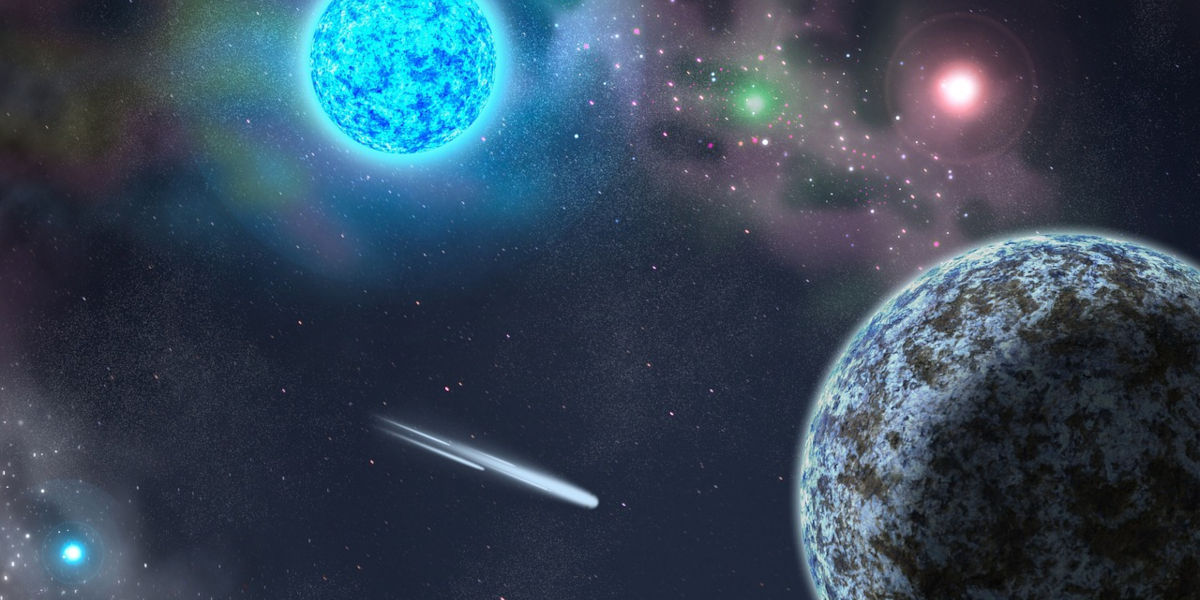Inside the universe's most dazzling celestial bodies, a dramatic spectacle unfolds under extreme conditions. For centuries, these cosmic phenomena have drawn the curiosity of astronomers and scientists worldwide, leading to thrilling discoveries about our universe's marvels. One such fascinating subject in the domain of stellar astrophysics is a neutron star. Through this article, we will delve deep into the universe to understand neutron star properties, explore the unimagined density of neutron stars, and answer the question, "Can anything be denser than a neutron star?".
Unraveling the Fascinating Neutron Star Properties
Neutron stars, the immensely compact remnants left after a supernova explosion, possess some of the most intriguing and extreme properties in the cosmos. These celestial bodies, although no larger than a city, pack mass equivalent to our Sun. It's this incredible density that grants neutron stars a place among the universe's most unusual objects.
Primarily composed of densely packed neutrons, they exhibit extraordinarily strong gravitational fields, only second to black holes. These stars also boast intense magnetic fields that are billion times stronger than anything ever produced on Earth, driving some of the universe's most energetic phenomena.
With incredible rotational speeds reaching up to 716 times per second, neutron stars spew beams of radiation into space, earning them the nickname 'cosmic lighthouses.' Understanding these properties not only feeds our curiosity but also provides valuable insights about the universe's very fabric and the intriguing physics operating under such extreme conditions.
The Unfathomable Density of Neutron Stars
Transcending our common understanding of density, neutron stars present an entirely new vista. A sugar-cube sized matter from a neutron star would weigh about a billion tons on Earth, the same as a cube of lead stretching over 800 meters on each side! This sheer density is the result of the star's gravitationally compressed constituent particles, primarily neutrons.
Let's break it down for better understanding — ordinarily, atoms comprise a central nucleus surrounded by an electron cloud. In neutron stars, pressure is so unimaginably high that electrons and protons merge to form a superdense neutron soup, filling the star's interior. It's this exceptional density that triggers the powerful magnetic and gravitational effects associated with neutron stars, making their study significantly important to the fields of astrophysics and quantum mechanics.
Looking closely at these characteristics, you might be left wondering — can anything be denser than a neutron star?
The tantalizing mysteries surrounding Neutron stars have intrigued scientists since their discovery in 1967. These cosmic oddities, born in the fiery furnace of a supernova explosion, are not only incredibly dense but are also the most solid objects in the universe, even denser than diamonds.
Imagine a sugar cube weighing as much as the entire human population! That gives you a glimpse of the mind-boggling density of neutron stars. These astronomical bodies, typically about 10 miles in diameter, can pack in a mass greater than our sun.
To visualize the density and toughness of these stars, consider this: A spoonful of neutron star matter would weigh around a billion tons on Earth. And yet, despite their immense mass, these exotic objects rotate at an unbelievable pace, making a full turn every 1-10 seconds.
The Extreme Conditions of Neutron Stars
The extreme conditions inside neutron stars make them unique laboratories for studying physics. Under such intense gravitational pressure, the atomic structure collapses, and protons and electrons combine to form neutrons, giving the star its name.
Beneath the thin atmosphere of neutron stars lie layers of superdense matter. These form a crust so strong that falling pebbles could cause destructive starquakes. Even further below, the star's core is predicted to house exotic states of dense matter not found anywhere else in the universe.
Peering into Neutron Stars: A Challenge for Astronomers
Neutron stars are notoriously difficult to study. Their small size, immense distance, and mind-boggling conditions make it nearly impossible to recreate their conditions in a lab setting.
However, astronomers have managed to glean some understanding of these cosmic bodies through their intense gravity and radiation. By studying the pulses of radiation produced by spinning neutron stars, called pulsars, mysteries surrounding these cosmic objects slowly unfold.
Excitingly, with the advent of advanced radio and X-ray telescopes and gravitational-wave observatories, our understanding of these celestial bodies has greatly improved. These tools promise to shed more light on the uncharted territories of neutron stars.
Conclusion
In conclusion, the extreme conditions inside neutron stars have propelled them to the forefront of astrophysics research. Even as these celestial bodies continue to unravel, their study pushes the boundaries of our understanding of the universe and the fundamental laws of physics.




